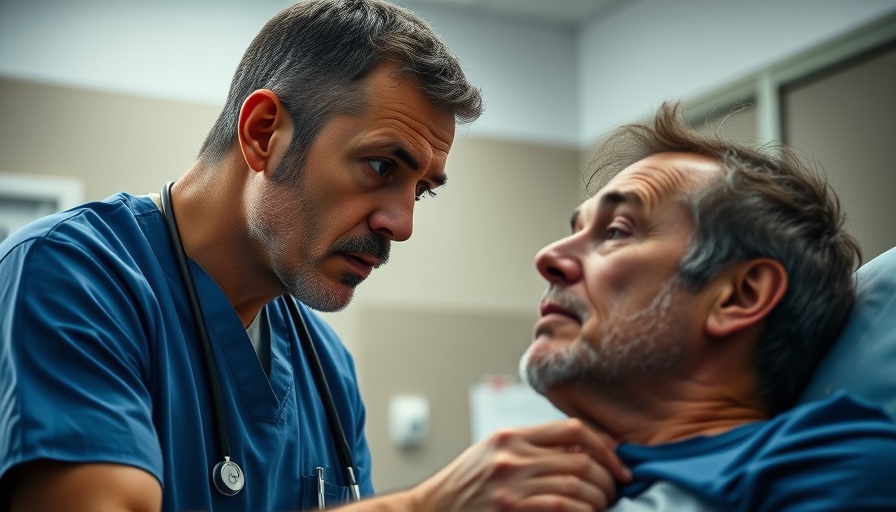
Squid Game's Medical Realism: What the Show Gets Right and Wrong
As the thrilling trilogy of "Squid Game" winds to a close, the show remains a riveting blend of survival, morality, and, surprisingly, medical drama. In a recent analysis of the series’ latest season, a doctor points out key inaccuracies and startling realism throughout pivotal scenes. What captured attention is how these dynamics affect not just the characters within the game but viewers' understanding of medical emergencies.
In 'Doctor Reacts To Squid Game Season 3 Injuries', the discussion dives into medical accuracy in extreme situations, exploring key insights that sparked deeper analysis on our end.
Understanding the Medical Realities of Extreme Situations
In the heart-pounding world of "Squid Game," characters frequently find themselves in life-threatening scenarios that require quick thinking and immediate medical action. The analysis highlighted moments of shock—a man seemingly unconscious yet needing emergency assistance. The doc notes, "If he dies, so do you," emphasizing the high stakes for potential caregivers. This scenario prompts critical thinking about what medical professionals truly go through in emergencies. Dr. Collins shares, “Real-life medical emergencies rarely pan out as dramatically as depicted.” Understanding the urgency in life-and-death circumstances is essential for both healthcare providers and viewers.
The Reality Check on Medical Procedures: What Would Happen?
Many scenes depict rushes to save a character’s life with minimal medical equipment—something that rarely mirrors reality. For instance, the assessment about needing a blood transfusion without proper blood pressure checks or lab tests illustrates a significant gap in proper medical protocols. As Dr. Collins reflects, this not only raises eyebrows among healthcare professionals but could mislead viewers about real medical practices, like a CBC before any transfusion.
Mental Health Perspectives in High-Stress Situations
Another dimension explored is the mental state of contestants forced into chaos. The show paints a stark picture of how extreme stress can drastically alter one’s mental health. The examination of a character experiencing withdrawal or 'crash' highlights the long-term effects of stress and trauma. “Psychological firsthand experiences gained during medical practice can resonate with character portrayals in the show,” notes Dr. Collins. Understanding these mental health ramifications is crucial, especially in an age where awareness about mental wellness is ever-increasing.
Pregnancy Under Duress: A Disturbing Reality
One of the most significant and unsettling arcs reveals a character giving birth during a life-or-death game. This scene shocked many, prompting discussions about reproductive health in extreme circumstances. Dr. Collins argues, “In reality, childbirth in conditions like those seen in the game would lead to numerous risks, not just for the child but the mother too.” These harrowing portrayals underscore a need for conversation around maternal healthcare amid crises, especially for marginalized communities often depicted in these roles.
Redefining Entertainment through Medical Authenticity
Overall, "Squid Game" offers a blend of entertainment and a bizarre look at the human condition. However, its portrayal of medical scenarios raises important questions about realism versus dramatization in entertainment. This is where shows like this can serve as starting points for educating viewers on medical realities. Dr. Collins encourages curiosity, suggesting that viewers keep an eye out for authentic portrayals of health in media.
As the discussion evolves around medical representation in popular culture, we can become informed consumers of content, questioning what we see while enjoying the thrill of the show. For those looking to dive deeper into how medical narratives influence societal perspectives, consider exploring available health education resources, and let’s keep the conversations going.
 Add Row
Add Row  Add
Add 




Write A Comment